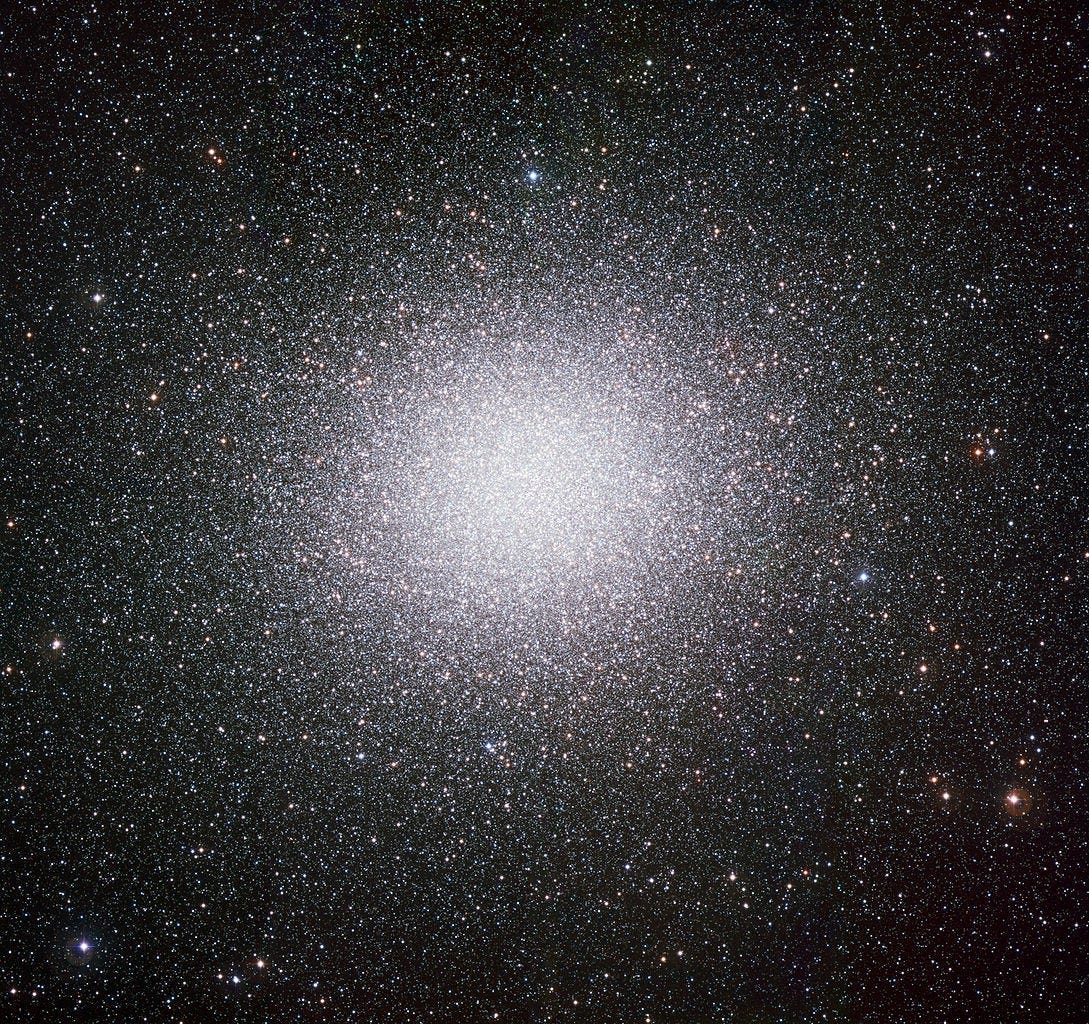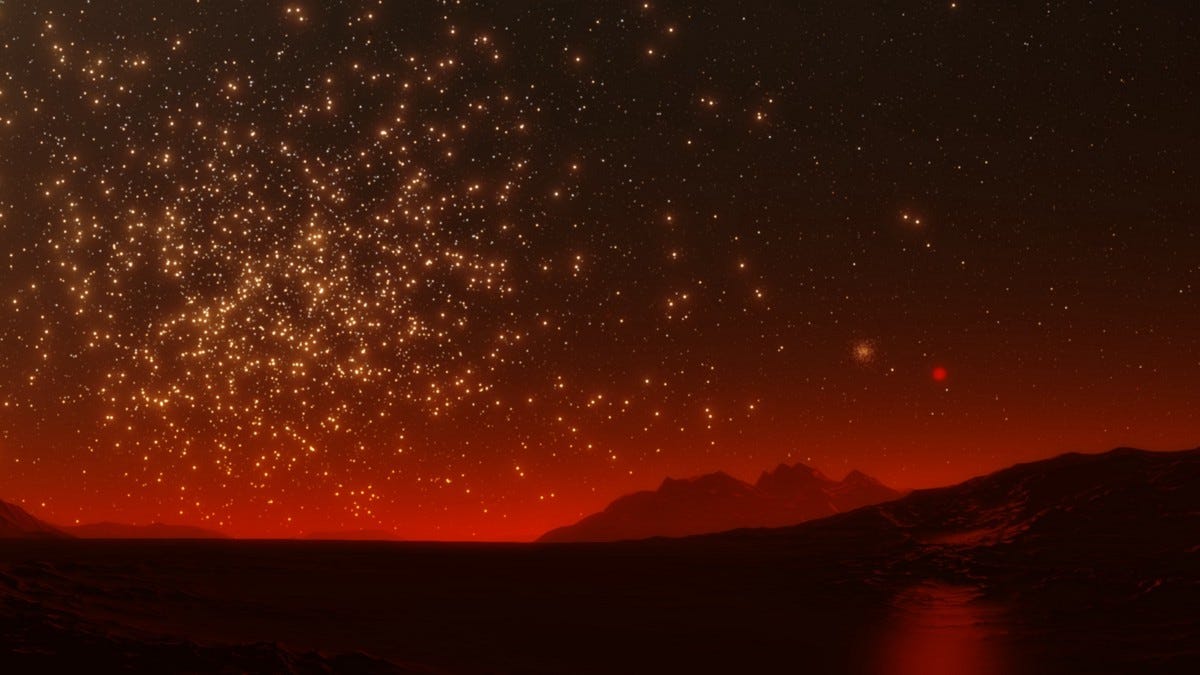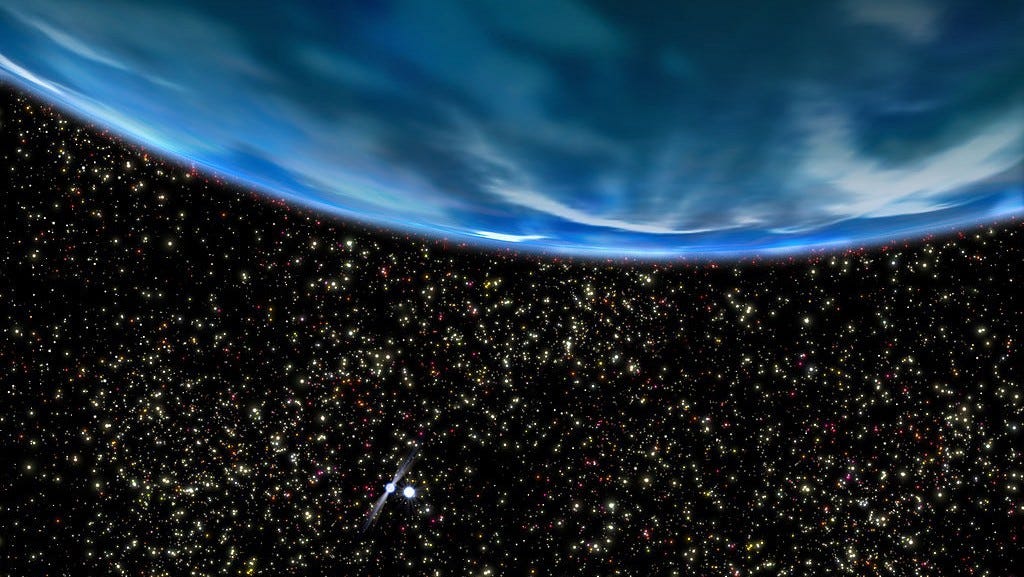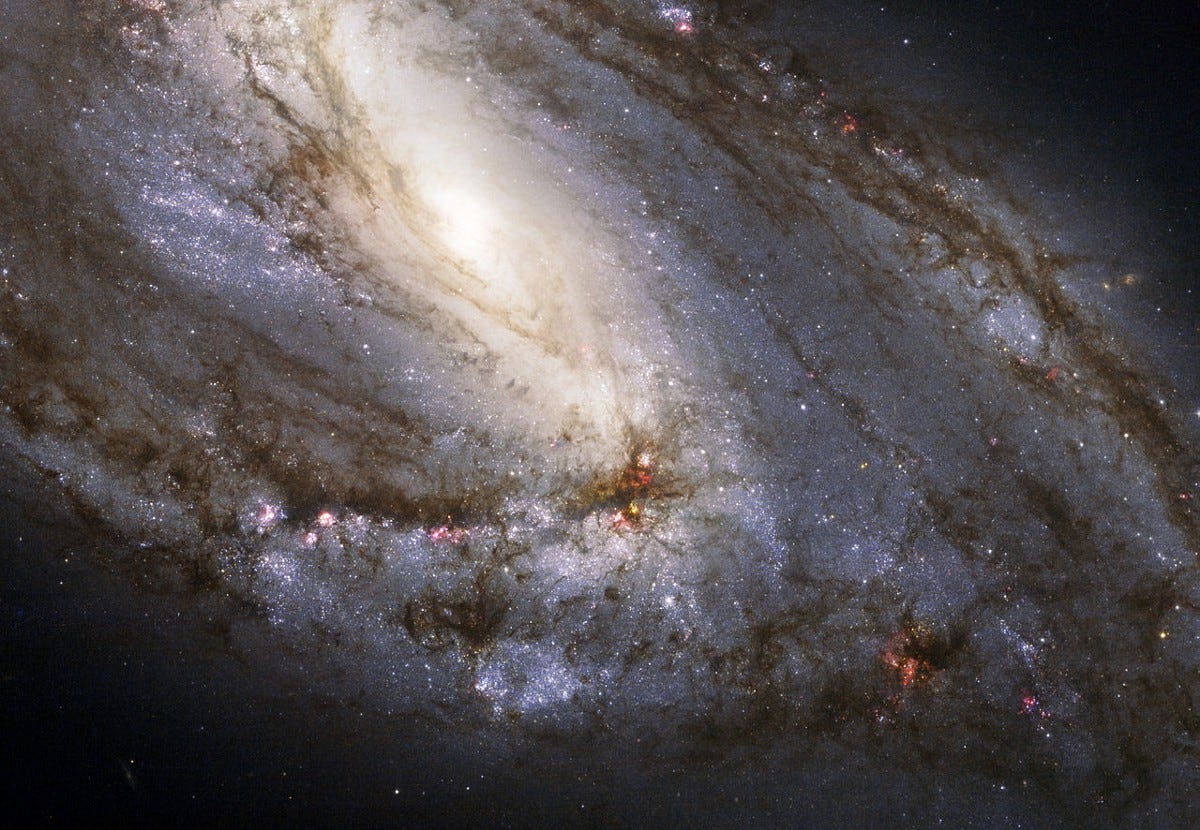Possibilities of life in globular clusters
An overview of all the arguments for and against life around one of the oldest stars in the Universe.
Globular clusters are an intriguing bunch of thousands to millions of stars held together by gravity within just ~10–100 light years.

Most of these massive star clusters are found orbiting the center of a galaxy at large distances. With so many stars packed in such a relatively short amount of area, imagine the possible view from a planet in such a giant cluster:

The possibilities of life forming and evolving in a globular cluster is radically different than those of planets around individual (or binary) stars in the galactic plane (like ours).
#1: Globular clusters are almost as old as the Universe
Unlike the relatively short 5 billion years of existence of the Sun, all known globular clusters in the Milky Way galaxy age more than 10 billion years! Hosting smaller and dimmer stars that will still outlive all Sun-like stars, planets around them flourishing with life becomes an intriguing possibility. Globular clusters are also void of big massive stars that whose supernovae/gamma ray bursts can cause mass extinctions.
#2: Globular clusters are ideal for Intelligent life to evolve
The extremely short distances between the stars means that every other star is but a few light-weeks away. This presents an excellent opportunity for Intelligent civilizations to migrate to and colonize other star systems with relative ease. Being an Interstellar species is the way to ensure survival on the unforgivably large scales of space and time. Using the method of geometric progression, the entire globular cluster can be colonized within a few thousand years. This has implications for detecting Intelligent life in a globular cluster, which can be tested relatively easily.
#3:Globular clusters are unlikely to host earth-like planets
Not all is good about the globular cluster environment though. All stars in a globular cluster are metal-poor, meaning lacking considerably in heavier elements like silicon, iron and magnesium. Terrestrial planets like the Earth are built from these heavy elements, thereby decreasing the possibility of their very formation. So it might be that globular clusters are really mostly void of terrestrial planets, leaving slim chances for life to form and evolve.
#4: Our searches for planets in globular clusters have been unsuccessful
The Hubble Space Telescope (HST) performed the largest survey till date to find planets in a globular cluster. 34,000 stars of the massive cluster 47 Tucanae were looked for planets but Hubble found nothing. Later though, PSR B1620–26 b became the first planet (and the only one yet) to be discovered in a globular cluster (M4).

The planet is estimated to be ~13 billion years old, almost as old as the Universe itself! The fact that it’s a gas giant (which is easier to discover than a terrestrial low-mass planet) leaves much less hope for finding earth-like planets in globular clusters.
#5: Planetary orbits in globular clusters are unstable
Simulations of planetary orbits at the core of globular clusters suggest that they will quickly become unstable due to gravitational effects of the stars. Even throughout the cluster, a nearby star can gravitationally disturb an outer planet, kicking it out of the system. Even a planet that orbits closely to its host star can be disturbed by nearby stars, making its orbit eccentric with severe tidal effects not suitable for life.
#6: A planet is found around a metal-poor dwarf star!
A recent discovery has challenged the assumption that metal-poor stars are unlikely to host low-mass planets. Just one such planet was found orbiting the most metal-poor dwarf star known to us. This discovery has important consequences for the possibility of earth-like planets existing in globular clusters considering their metal-poor nature.
#7: Planets in the outer edges of the cluster could be more habitable
The instability due to gravitational effects of nearby stars is relatively lesser at the outer edges of a globular cluster. And if low-mass planets are indeed there around stars at the outer edges, it increases the chances for life to exist there. All other advantages of being in a globular cluster (as discussed above) still applies at the outer edges of a cluster.
So it still possible for life (and intelligent life) to be out there in globular clusters. In 1974, we humans transmitted the Arecibo radio message — our first Interstellar communication message — directly aimed towards the globular cluster M13. With the cluster ~25,000 light years away from us, there is much time for the message to reach the cluster.

